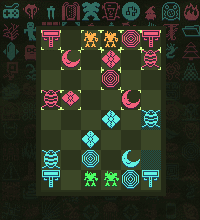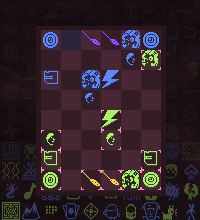Kill Screen Magazine's Blog, page 224
September 18, 2015
Ragdoll humor takes flight in Piloteer, a physics game about jetpack dangers
Flying a jetpack is hard in Piloteer. Comically hard. That makes your goal of convincing the people of Piloteer’s world that jetpacks are cool and safe and fun even harder—you have to actually land without injuring yourself first. Even if successful, this more often than not includes plenty of flailing around in the air, doing unintentional backflips, and almost face planting into every available surface before even beginning to orient yourself mid-air.
Piloteer debuted its humorous physics-based challenges first on iOS and Android, but it’s coming to PC, Mac, and Linux next. A new trailer reveals its desktop release date as September 25th.
The comedy of ragdoll physics exploded after games like QWOP and Happy Wheels made it a viable focal point, and it’s since taken off with games like Octodad, Surgeon Simulator, and now, Piloteer. This style of game’s ability to make even failure fun—or more importantly, funny—is what’s made it so popular.
Look out for Piloteer on Steam next week.
The Technical Challenges of Virtual Reality
Why a basic computer won't let you step into virtual worlds.
September 17, 2015
After six years of teasing, The Witness will finally come out on January 26th
Even the release date for The Witness is puzzling at first. It pops up at the end of the announcement trailer like this: "0126 • 2016." It took a good 10 seconds for my brain to realize it said January 26th 2016.
We have another four months to wait for it. We've already waited six years since Jonathan Blow announced it way back in August 2009. That was a year after Braid blew up and sent his name soaring. We're halfway through the next decade now. What does he and his small team have awaiting us?
there's much more to The Witness than solving puzzles
The new trailer shows only second-long glimpses at something larger than a puzzle game set on an apparently abandoned island. We know that, on these pastel lands, there are panels that need solving. They involve pushing bold white lines inside maze-like grids, some of them are self-contained, while others have effects on the surrounding environment. We've known this for a while. It's not new.
But that frozen scene of a woman and a child reaching out towards a blue sky from a shadowy cave, that's new. Getting on board a small wooden boat and navigating the coast with an interactive map, that's new. Activating a machine to shoot a beam of pure light to the top of the island's curiously mud-stroked mountain, that's new.
Yes, there's much more to The Witness than solving puzzles and manipulating parts of the island: its underground labyrinth, the towers built above the tree canopy, the bridges across open air. There are people to be found, or revealed, dotted around the island, their gestures captured as if cast in stone. There has to be more than puzzles. Or maybe it's that the biggest puzzle is who built all these puzzles and why?
Blow has previously said that he expects "the average time of 100%ing the game to be over 70 hours." That's a long time. And there are hundreds of puzzles to solve. That's all we really know. The rest is speculation. He's done plenty of teasing, and it's tantalizing that we don't know what story is being told here, through these puzzles, through these lost people. But it's also what has kept us hanging on for it to arrive for the past six years. In January we will finally get to work it all out.
The Witness is coming to PlayStation 4 and PC on January 26th 2016.
Murder Renaissance men with theology, seduction, and firearms
Classical music and art reminiscent of the Renaissance period are at the forefront of Masques and Murders, the newest game by designer James D. Patton. Players must navigate court as a lady dealing with the aftermath of her brother and father's murders, which has left her heir to a fortune.
Meanwhile, the prince who orchestrated these murders plans to force her into marriage with one of his sons to secure the fortune for himself. Using skills such as rhetoric, dance, and swordsmanship, the protagonist must impress and woo each of her would-be husbands to earn their trust and seal their demise.

The entire game runs on a timer: There are a limited number of days before she is to be wed. Until then, players have the option for her to make herself apocalyptically incensed, study across nine different topics, befriend the princess, seduce each man, and attend events.
Much of her fate is chosen for her, as most events are mandatory and she is required to have a certain proficiency in particular skills to excel at them and maintain good graces with potential husbands. The challenge, then, is to do so while avoiding suspicion and killing them all before she’s bound for life.
Masques and Murders is available at itch.io.
Shapes are scary in Euclidean, a 'geometric horror'
The terror of shapes.
Chesh is the drunken, rule-breaking sister of Chess
What would happen if Chess could get drunk? Would the knight fall off their horse? Would the queen take a fancy to one of the pawns? Would the rook go diagonally?
This is what the slur-titled Chesh looks to explore. It's the next game from Damian Sommer, who has already mixed up the choose-your-own-adventure game with the IGF-nominated The Yawhg, and now we find him throwing grog down the dusty throat of a classic board game. The hooligan! But no, Sommer's idea is pretty smart, potentially opening up Chess to new players by ditching all of its centuries-old rules. All of them? Yeah, why not?

The pitch is actually quite simple: "Every game of Chesh starts with different pieces, and each piece has a random movement rule assigned to it." There are 533 different pieces. Five-hundred-and-thirty-three. Yeah, wow, good luck memorizing what each of those do. And that's really the point. What having all of these pieces means is that, upon starting each match, you'll first have to get acquainted with what each piece you're randomly assigned can do. There's no tutorial, no guide; you have to work everything out while you play. So does your opponent.
essentially, breaking Chess.

Sommer came up with the concept behind Chesh while having a conversation with his game-making friend Droqen during Toronto Game Jam 9 (we played the first iteration of it at the event itself). They were discussing how to solve a problem that existed in "most abstract perfect-information board games (games where both players have full knowledge of every aspect of the game)." The problem in these types of games is that the player who goes first is at an advantage.
The pair saw this in the game Connect Four in which the first player will win every time if they play perfectly. Other games, such as Go, try to address this problem by awarding bonus points to the player who goes second. But Sommer wanted to actually fix this problem. And that's when he came up with the idea of, essentially, breaking Chess.
Since then, he's worked with over 30 artists to create the 533 pieces in Chesh (ensuring it's colorblind friendly), and also adapted it work on mobile. Now, this fancier version of Chesh, which will be released for iOS on October 8th, has three different game modes (Bullet Chesh, Infinite Chesh, and Blitz Chesh), and lets you play against an AI-controlled opponent, or in online or local multiplayer if you prefer the wit of another human.
You can find out more about Chesh on its website. It'll be out for iOS on October 8th and will be on sale at $2.99 before being upped to $4.99.
A Two5six conversation about surveillance, in games and out of it
The game designer as hacker
Riot ��� Civil Unrest might be coming to a town near you
I first covered Riot — Civil Unrest in the midst of the protests in Baltimore over the death of Freddie Gray. It’s always the midst of something. The news cycle leaves injustices behind with alarming regularity, but it never lacks for new sadness to glom on to. There’s no comfort in such predictability, just exhaustion, which is how I came to feel about Riot — Civil Unrest. It captured the sensation that unrest is everywhere. Well, it almost did.
Riot — Civil Unrest’s action will take place in Italy, Greece, Spain, and Egypt, four countries with plenty of strife, but also a world away from the (North) American context in which I approached it. To claim these four episodes are wholly universal is to whitewash the experiences of protestors worldwide, and that is what I fear I did last April. This is no fault of Riot’s developers: There is too much strife in the world for an entire game to be comprehensive. The easiest way to fill that void is by projecting your angst onto a game that has its own specific focus.

Or at least that used to be the case. On Wednesday, MergeGamesLtd announced that a series of new locales would be added to Riot — Civil Unrest as bonuses for completing the existing stages. The list, in its entirety, is comprised of:
NoMOUS – A protest in Sicily in which rebels are trying to stop a secret American military antenna from being built.
Notre Dame Des Landes – A protest in France where rebels are trying to stop an airport from being built.
Syntagma Square – A demonstration in Athens following the recent austerity discussions.
Occupy Oakland –Rebels are protesting against the assassination of a young protester killed by a police officer during the occupy movement.
Clichy sous Bois - A violent protest in France where north African rebels protest against the death by electrocution of two teenagers chased down by the police.
Maidan Nezalezhnosti – Ukrainian protesters gather in as political tempers fray as independence is threatened.
Riot — Civil Unrest is still not a game about every protest. It never will be. Nor can we be sure that its mechanics will effectively convey the intricacies of all these new scenarios. Nevertheless, it’s interesting to see Riot expand (within the Northern hemisphere). Its settings may vary, but Riot — Civil Unrest is beginning to suggest that uprising may be a sort of universal language. Its words add up to different meanings—claims, struggles, desires—but they are all reflective of some basic desires. Riot — Civil Unrest may ultimately have less to say about any specific episode than it does with protest as a fundamentally human exercise.
Panoramical turns sound to magical color and back again
Making music, making motion, making magic.
September 16, 2015
Manifold Garden turns magnificent architecture into an endless playground
Willy Chyr has changed the name of the videogame he's been working on for the past two years or so. What was once known as "Relativity" is now known as Manifold Garden. And, blimey, you can see why this new title was chosen upon seeing the latest screens from the game. It really does appear as a space where Chyr has cultivated, not flowers or plants, but engulfing structures that stretch out in every direction, eternally.
"The original prototype was based on the M.C. Escher print Relativity and just involved changing gravity to walk on walls," Chyr explains. "The game is so much more than that now. We’ve added a ton of new mechanics, and the game is now really about exploring architecture and consequences in a world where physics is turned upside down."
[image error]
When I spoke to Willy Chyr back in April this year about the new directions he was taking his puzzle-exploration game I didn't expect anything quite this striking. Beyond merely upping the complexity of this impossible architecture so that it appears both honeycombed and unfathomably voluminous, he's introduced ways for it to be played with.
exploring the potential of this mind-warping logic.
Drop a cube off the edge of a platform in this virtual world and you'll simultaneously see it falling below and above you as the space wraps around itself. The puzzles are based on exploring the potential of this mind-warping logic. From cubes you advance to water: Chyr demonstrates how you can use cubes to change the direction of the water flow, leading it off the edge to fall back into itself and forming a reversible waterfall. This stream of water is used to grow trees out of the cubes once you've planted them in the ground. The fruit of these trees are more cubes; you harvest cubes in order to solve puzzles, possibly discovering new types with different effects as you go.
"In the later levels, we even start to change how the world wraps around. What happens if you staggered each repetition? Or rotated every other instance?" Chyr questions. He then shares this beguiling image:

This is not all. Chyr has developed a "Photography Mode" that unlocks once you've completed all the puzzles in an area. It gives you a chance to return to the architecture you were previously walking on, and to experience it anew, taking pictures of it with "access to a variety of cameras and effects, such as axonometric, or 'glitch'."
The results of these in-game photographs (or screenshots) speak for themselves. Hence, Chyr has supplied 100 of them as desktop wallpapers. Go and browse those while I fan myself down. Architecture, especially the imagined and impossible variety, gets me hot under the collar. Manifold Garden, eh? What a thing.
Kill Screen Magazine's Blog
- Kill Screen Magazine's profile
- 4 followers



